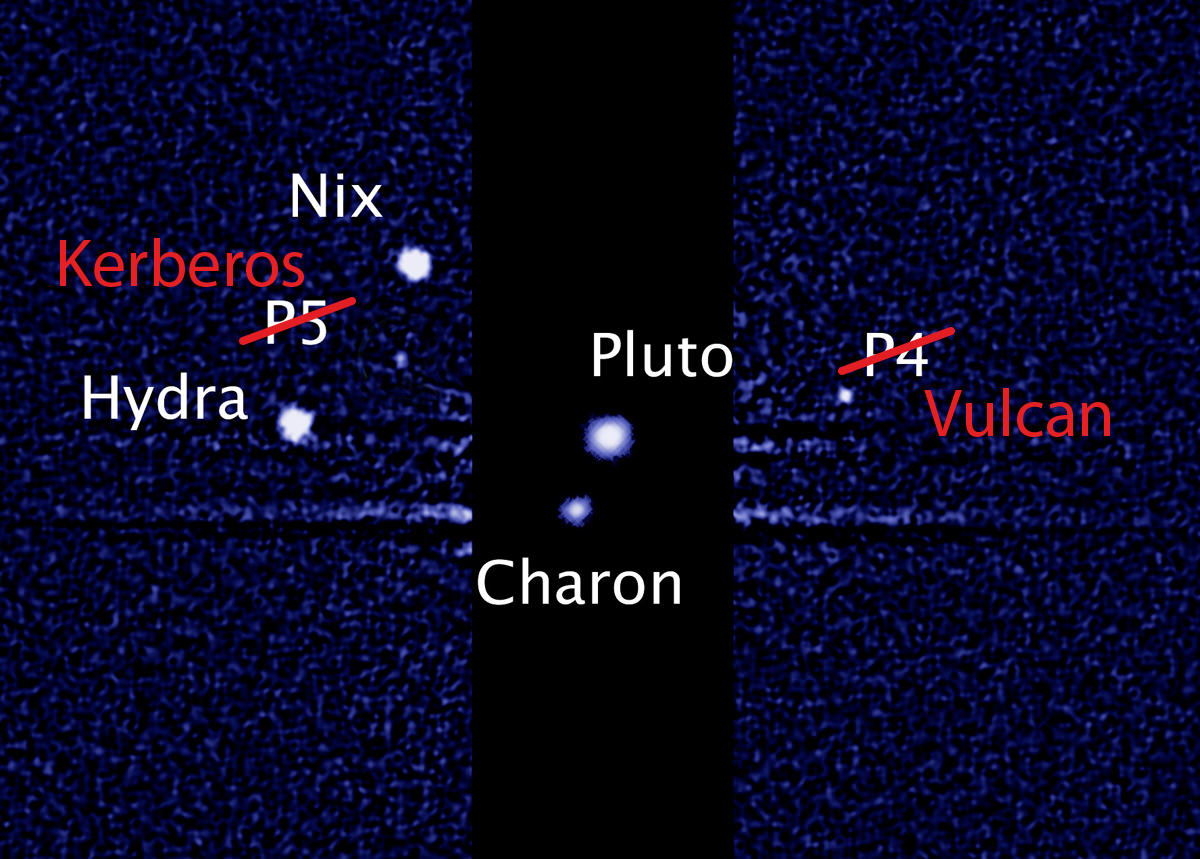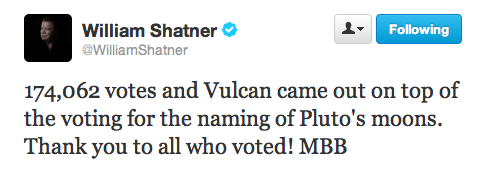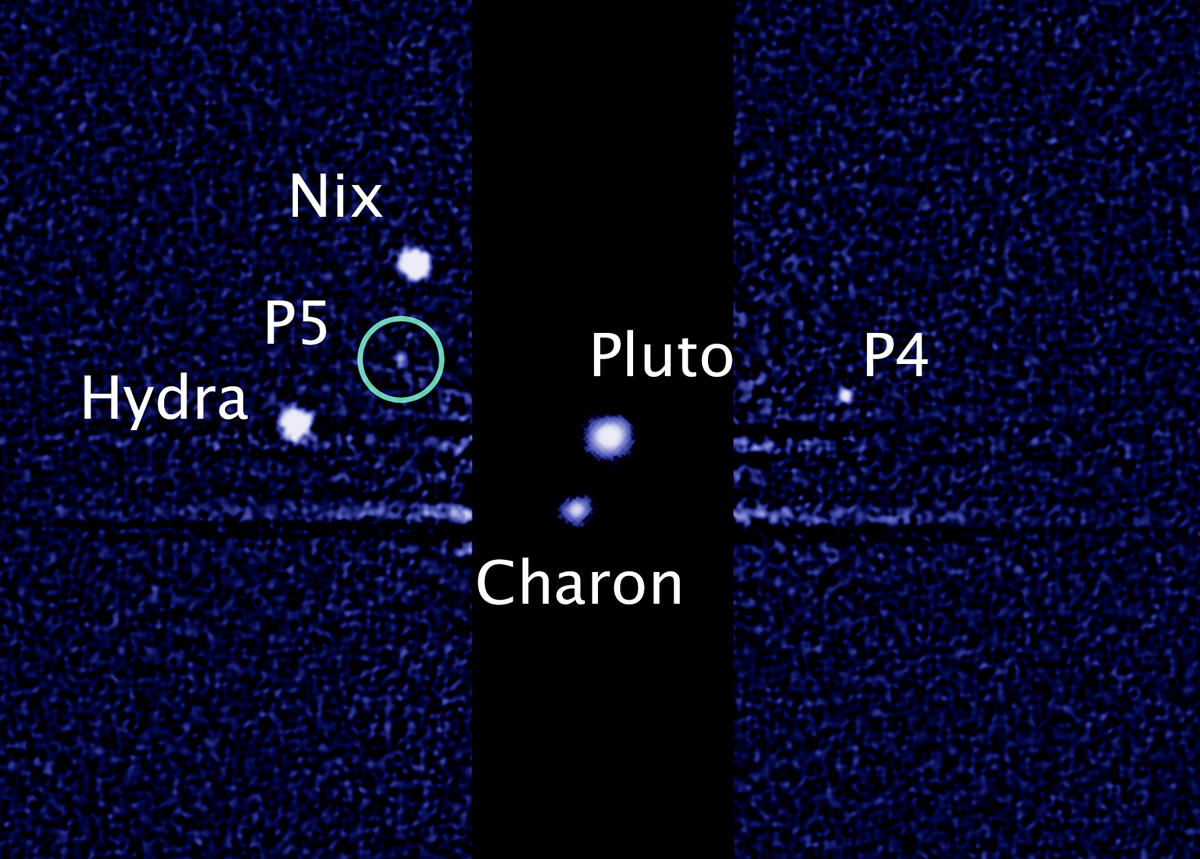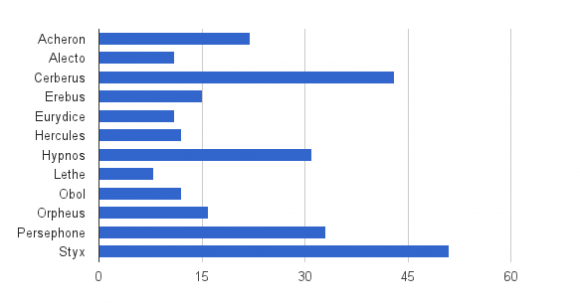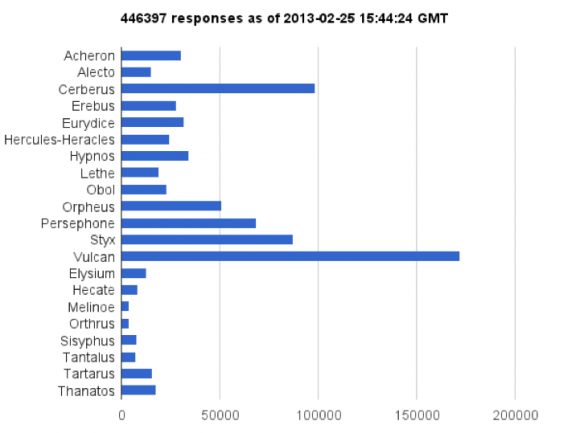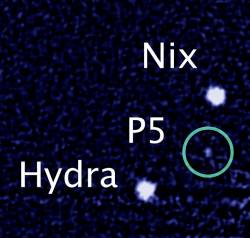It looks like Vulcan was not the logical choice for the International Astronomical Union when it came to naming Pluto’s new moons.
The internationally recognized body for astronomy names selected Kerberos and Styx as the new names for Plutonian moons P4 and P5, respectively. While these names were popular in a public vote last year concerning Pluto’s new moons, Vulcan — the overwhelming favorite, and backed by none other than Star Trek‘s Captain Kirk (William Shatner) — was not selected.
The Search For Extraterrestrial Intelligence (SETI) said Vulcan, which was first popularized in the 1960s as the home world of Star Trek character Spock, was considered.
“The IAU gave serious consideration to this name, which happens to be shared by the Roman god of volcanoes. However, because that name has already been used in astronomy, and because the Roman god is not closely associated with Pluto, this proposal was rejected,” a release stated.
Vulcan was previously used as the name for a hypothetical world in the interior of Mercury’s orbit, but that idea has since been discredited. (More on Universe Today writer David Dickinson’s website.)

There will be more about Styx and Kerberos in this SETI-hosted Google Hangout, which will be held live starting at noon Eastern (4 p.m. GMT).
Kerberos is a three-headed dog in Greek mythology and Styx a mythological river that is the boundary between the living world and that of the dead. These are fitting names given Pluto’s other moons: Charon, Nix and Hydra, all of which meet the IAU’s rules to name them after Greek and Roman underworld personas.
We’ll get a closer look at these strange new worlds in 2015, when the New Horizons spacecraft skims through the Pluto system. There may be other, tiny moons lurking around the dwarf planet that New Horizons could find.
Do you feel the IAU made the right choice? It’s not the first time it waded into tricky waters concerning Pluto; some in the public still complain today about the decision to demote Pluto to dwarf planet status in 2006.
Leave your thoughts in the comments.
Source: SETI


